Permaculture Gardener Shares Her 10 Favourite Alternatives To A Grass Lawn


Elizabeth is a Permaculture Garden Designer, Sustainability Consultant and Professional Writer, working as an advocate for positive change. She graduated from the University of St. Andrews with an MA in English and Philosophy and obtained a Diploma in Applied Permaculture Design from the Permaculture Association.
Reviewed By COLIN SKELLY

Colin is a Horticulturist and Horticultural Consultant with experience in a range of practical and managerial roles across heritage, commercial and public horticulture. He holds the Royal Horticultural Society’s Master of Horticulture award and has a particular interest in horticultural ecology and naturalistic planting for habitat and climate resilience.
IN THIS GUIDE
- Why Get Rid Of Your Grass Lawn?
- What A Grass Lawn Alternative Might Provide
- 1) A Neat, Open Space Without Grass
- 2) Wildflower Meadows
- 3) Ponds & Water Features
- 4) Other Wildlife Habitats
- 5) No-Dig Annual Food Producing Beds
- 6) Perennial Vegetable Beds
- 7) A Forest Garden
- 8) Natural Play Areas For Kids
- 9) Forage For Chickens / Other Garden Livestock
- 10) Eco-Friendly Patio / Decking
- References
Boring grass lawns are not the best choice for an eco-friendly garden.
Most gardens have at least some lawn, but increasingly, people are beginning to question whether this really is the best use of the space.
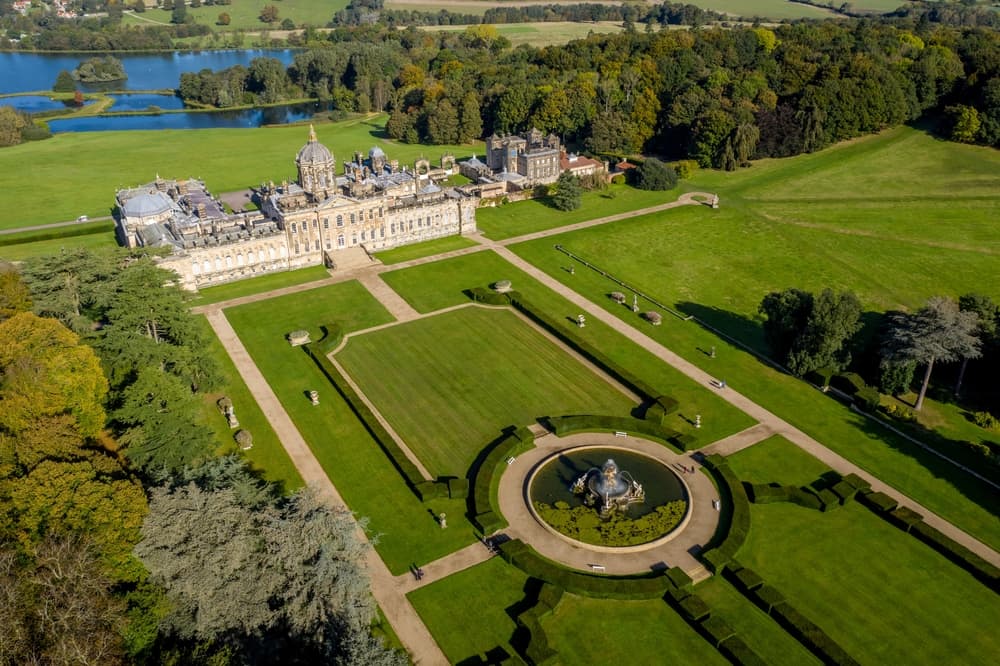
Historically, lawns were the preserve of grand estates, where they were kept short by livestock or the use of a scythe.1History of Early American Landscape Design. (n.d.). National Gallery of Art. Retrieved March 20, 2023, from https://heald.nga.gov/mediawiki/index.php/Lawn
With the advent of the powered lawn mower, and the decrease in the need for domestic food production with the proliferation of supermarkets and global supply chains, they became the norm for typical home gardens.
Where, once, every home would have had its own kitchen garden and grown a range of useful and appealing plants, mono-culture grass lawns began to take over.2Balogh, A. (2021, December 13). The rise and fall of monoculture farming. Horizon Magazine. Retrieved March 20, 2023, from https://ec.europa.eu/research-and-innovation/en/horizon-magazine/rise-and-fall-monoculture-farming
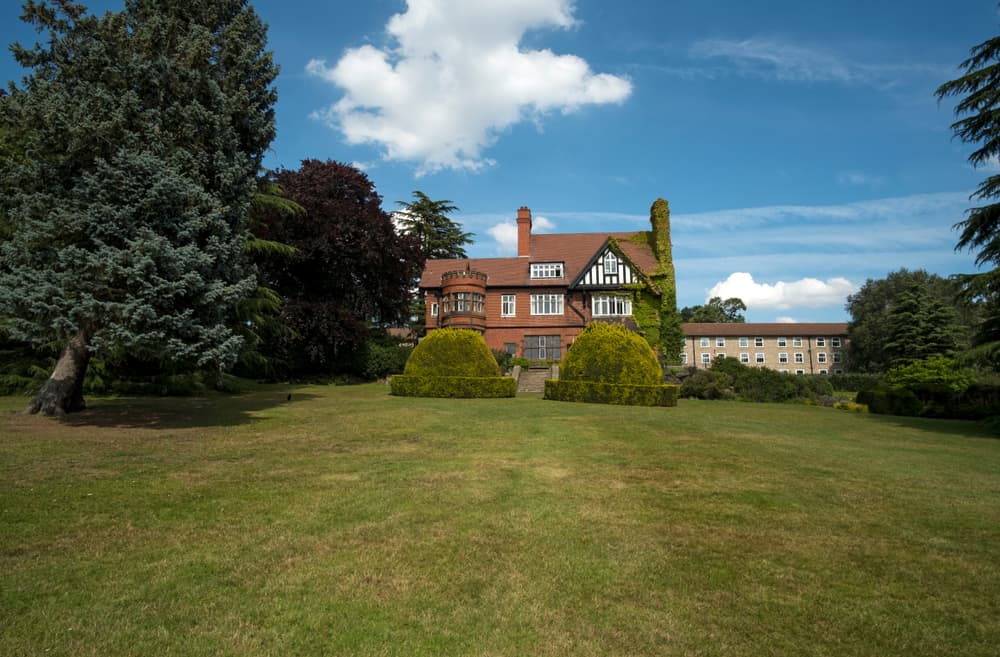
But things are beginning to change, with more and more gardeners realising that lawns are not the best use of their space.
Read on to learn why boring mowed grass lawns are not ideal, and to discover some of the interesting alternatives to a grass lawn to consider:
Why Get Rid Of Your Grass Lawn?

Typical mowed grass lawns are an example of a monoculture.
They typically include just one dominant plant – grass.
Many gardeners struggle to keep their lawns looking neat, they get rid of any ‘weeds’ and mow them very regularly to maintain them.
Fighting to maintain a neat grass lawn damages the ecosystem of a garden.
This has led to prominent campaigns like ‘No Mow May’, which encourage gardeners to skip mowing for a month, in order to benefit local wildlife species.3Ways to support us. (n.d.). National Trust. Retrieved March 20, 2023, from https://www.nationaltrust.org.uk/support-us

Even when a lawn is maintained organically, a mono-culture grass lawn is not natural at all.
Diversity – a range of plant and animal life working together in harmony – is key for a healthy garden.4Wilson, E. (2008). Why do we need to protect biodiversity? Environment: European Commission. Retrieved March 20, 2023, from https://ec.europa.eu/environment/nature/biodiversity/intro/index_en.htm
The lack of diversity in a grass lawn is not just boring – it contributes to biodiversity losses.5Kogut, P. (2020, October 20). Monoculture Farming In Agriculture Industry. EOS Data Analytics. Retrieved March 20, 2023, from https://eos.com/blog/monoculture-farming/
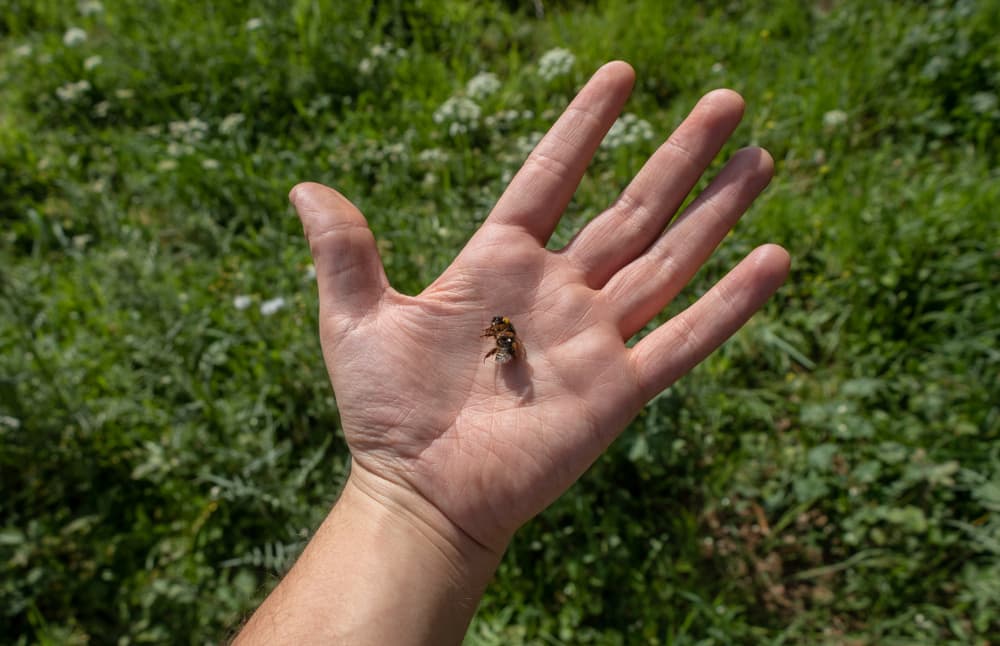
Regular mowing harms wildlife, and the surrounding environment is diminished and becomes less resilient as a result.
Another thing to consider is that lawns actually take quite a lot of work.
Just think what you could do with all the time that you would have spent mowing!
What A Grass Lawn Alternative Might Provide
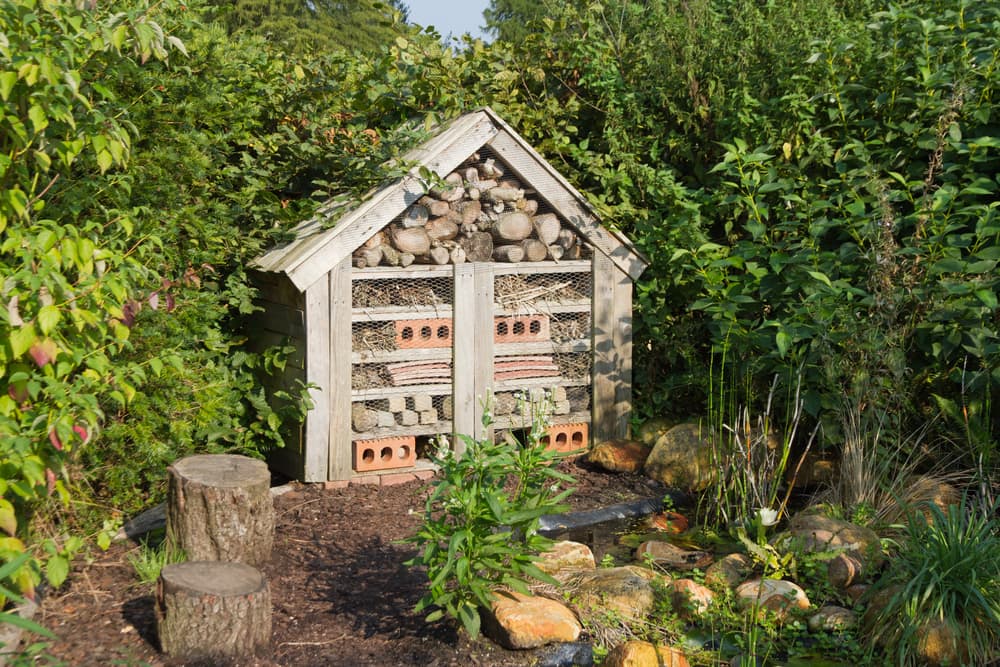
When you ditch a mono-culture grass lawn and opt for a more natural and diverse alternative, there is a lot to be gained.
A grass lawn alternative might provide:
- Food for you and your family.
- Other yields for your household, including herbs and crafting materials which help you live in a more sustainable way.
- Biodiverse environments which help you and your family keep happy as you interact more harmoniously with nature.
- Improved amenity outdoor living areas – with shade, increased privacy, better protection from air or noise pollution.
- An enhanced environment which attracts and benefits a wide range of local wildlife.
1) A Neat, Open Space Without Grass
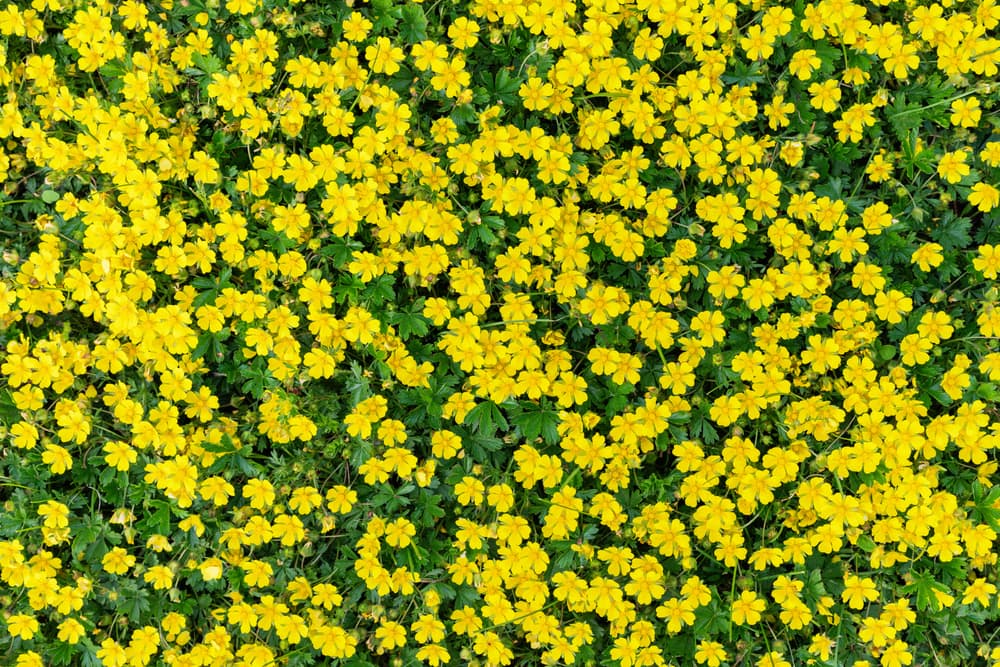
Some gardeners are reluctant to give up a grass lawn because they like the open outlook.
They do not want to increase shade, nor block the views with higher plantings.
But it is important to remember that you can create ground cover planting without sticking to a grass that needs to be mowed.
Small areas of lawn can relatively easily be replaced with other ground cover plants which are suited to the environment and growing conditions in your garden.
“”There is a temptation to put borders around the outside of a lawned area,” shares Horticultural Consultant Colin Skelly.
“Get rid of this idea and the lawn becomes at most a supporting part to other plantings in the garden.

Alternatively, just try to mow parts of the garden and leave other areas to grow, cutting once or twice a year (preferably removing and composting the cut material).
“Once you do this, the chore of regular grass cutting is replaced with more interesting and biodiverse garden space.”
A chamomile lawn is one famous example, but there is actually a range of herbs that are great for ground cover.
These low growing, spreading herbs (creeping thyme, marjoram, oregano etc.) not only cover a sunny, free-draining area without making it feel too closed in, they are also great for wildlife, and can provide you with a range of yields.
They can cope with occasional foot traffic.
Clovers are another interesting option to consider.
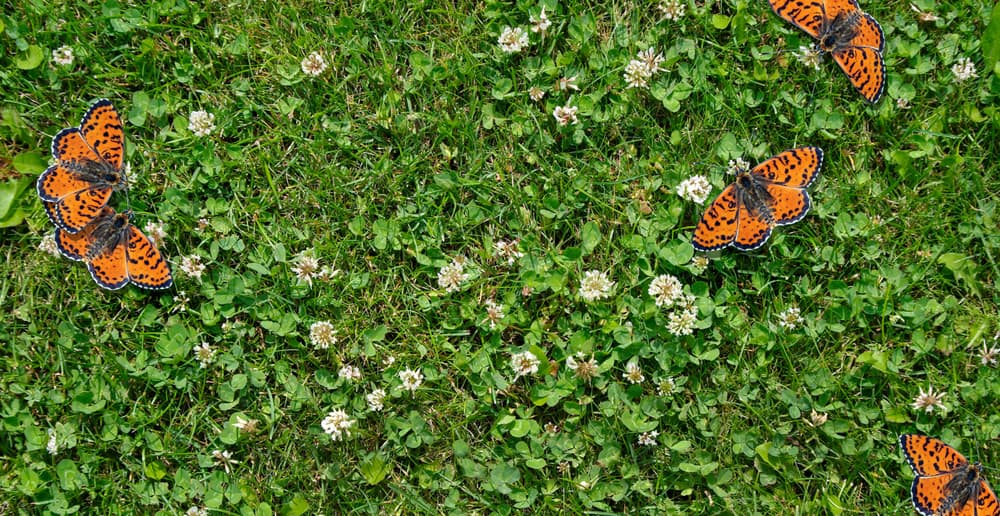
Clovers are other great ground cover plants and they can also be fantastic for wildlife – as well as being great for the fertility in your garden.
An area of clover will keep the garden feeling open, while fixing nitrogen for the benefit of surrounding plants.
In shaded, boggy areas, grass lawns may be patchy, but moss can make for a soft and lush looking ground cover in such areas.
If you choose the right plants for the right places, you can create a range of different ground covers for diverse spaces without sticking to boring grass lawns.
2) Wildflower Meadows

Perhaps the most popular option today for those looking to create a more eco-friendly alternative to a grass lawn is a wildflower meadow.6Wildflower Meadows. (n.d.). Sustainability Exchange. Retrieved March 20, 2023, from https://www.sustainabilityexchange.ac.uk/wildflower_meadows
Joining the ‘no mow’ movement and letting weeds and wildflowers colonise an existing lawn is one way to let nature back into your garden.
As well as grasses, a natural ‘wild’ lawn will be mowed far less frequently.
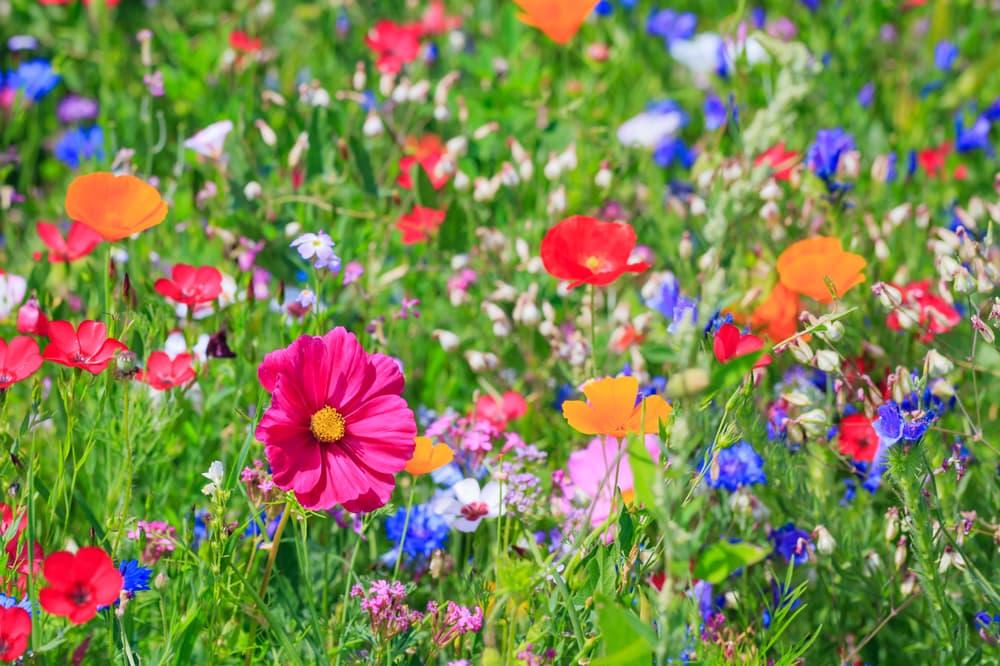
In addition to grasses, such a lawn may also include nitrogen-fixing plants like clovers, lawn flowers such as dandelions, daisies, creeping primrose, germander speedwell, selfheal, chickweed and more…
It may also have larger self-seeding plants like nettles, dock, thistles, cow parsley and plantain, for example.
Some people are going one stage further and sowing perennial meadow seed mixes into existing grasses.
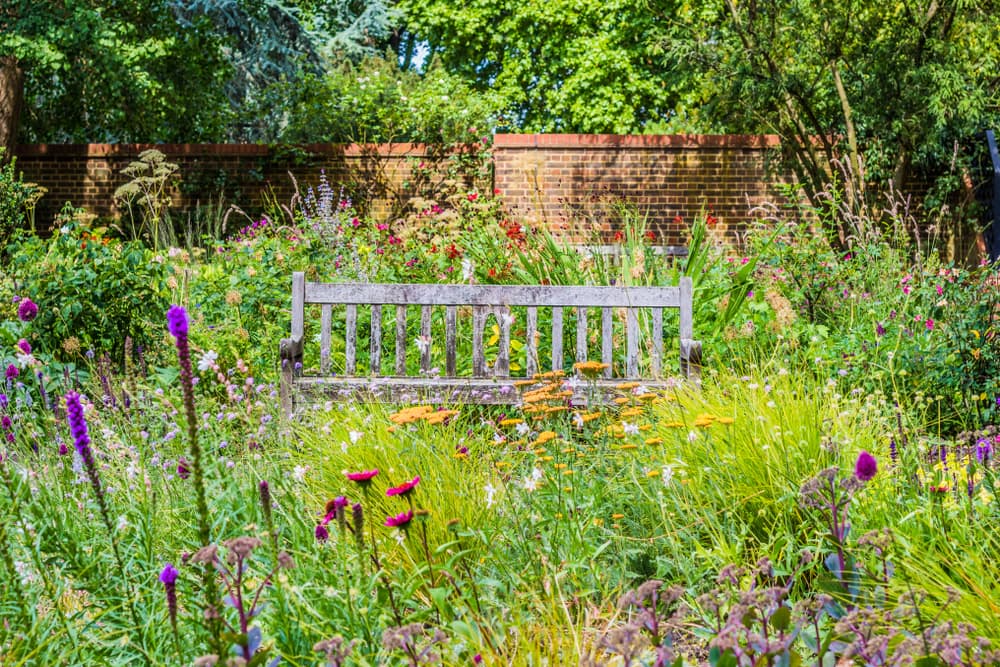
These mixes don’t just rely on self-seeding ‘weeds’ but include specific flowering plants which help suppress grass growth and create a more diverse ecology.7Forest Research. (2022a, February 9). Wildflower meadow habitats. Retrieved March 20, 2023, from https://www.forestresearch.gov.uk/tools-and-resources/fthr/urban-regeneration-and-greenspace-partnership/greenspace-in-practice/benefits-of-greenspace/wildflower-meadow-habitats/
Some people may also plant flowering bulbs to naturalise in the wild lawn/perennial meadow area.
Where there is no existing grass cover, or where the turf has been removed, another option is creating an annual meadow, with plants like poppies, cornflowers etc.
Both perennial and annual meadow planting schemes can be wonderful alternatives to a grass lawn.
3) Ponds & Water Features

If you want to do the right thing for wildlife in your area, another way to use an area that was a lawn is to create a wildlife pond, or other water feature.
Water will be beneficial for a wide range of wildlife, and can also improve the space for you and your family too.8Water: Garden for Wildlife. (n.d.). National Wildlife Federation. Retrieved March 20, 2023, from https://www.nwf.org/Garden-for-Wildlife/Water
Ponds are perhaps one of the best features you can add to boost the biodiversity in your space.
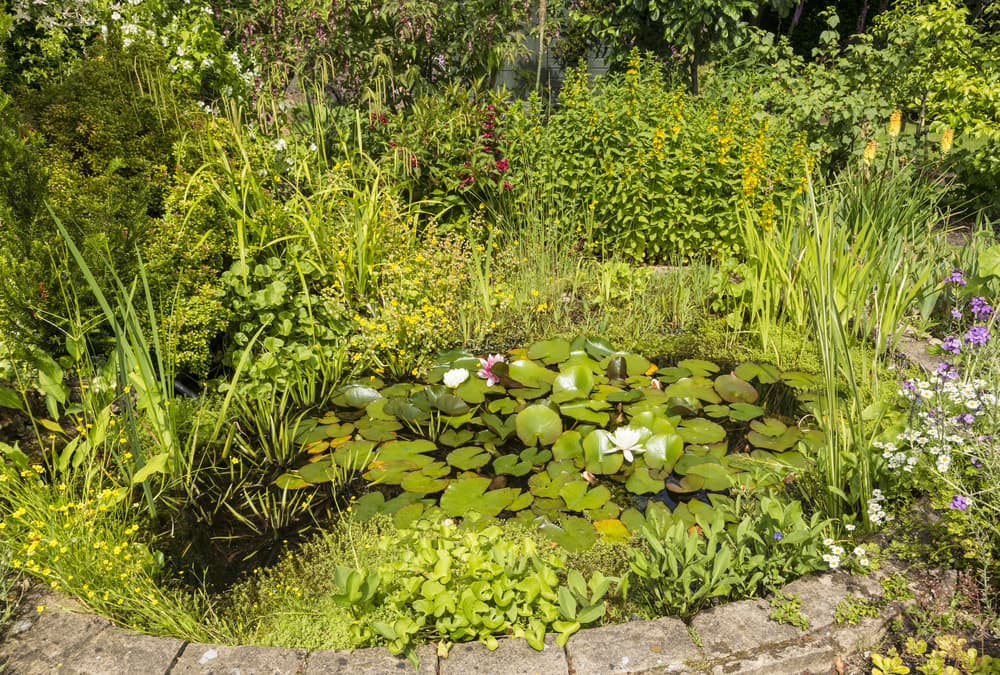
Create a pathway winding through planting to a secret spot where you can watch the wildlife, see the sunlight on the water, and even hear sounds of flowing water, perhaps.
A pond, maybe one with a solar-powered water feature, can make your garden a more interesting and relaxing place to be.
4) Other Wildlife Habitats

Meadows and ponds are two excellent habitats to create for a wildlife-friendly garden, but these are by no means the only wildlife habitats which could be great alternatives to a grass lawn.
You might also replace a lawn with:
- A woodland garden, with native trees, shrubs and ground cover plants.
- A rockery or alpine garden.
- A stumpery or stump garden in a shadier spot.
- An attractive herb garden.
- Wide perennial borders, with a winding path between them.
5) No-Dig Annual Food Producing Beds

Of course, areas currently taken up by grass lawns could also become a place to grow food for you and your family.
It is very easy and straightforward to make new ‘no dig’ lasagna beds on top of an existing lawn.
Simply mark out the area where you want new beds, place bed edging to keep things neater, cover the area with cardboard, then layer organic matter (carbon-rich and nitrogen-rich – as you would do in a composting system) to build up your new beds to the desired height.
Top these new beds with compost, and plant into them right away.
6) Perennial Vegetable Beds

When you think about growing your own food, your mind may jump straight to annual production.
But growing common annual crops is not the only option when it comes to growing your own.
New beds might also be used to grow perennial edibles, for a far more low-maintenance scheme.
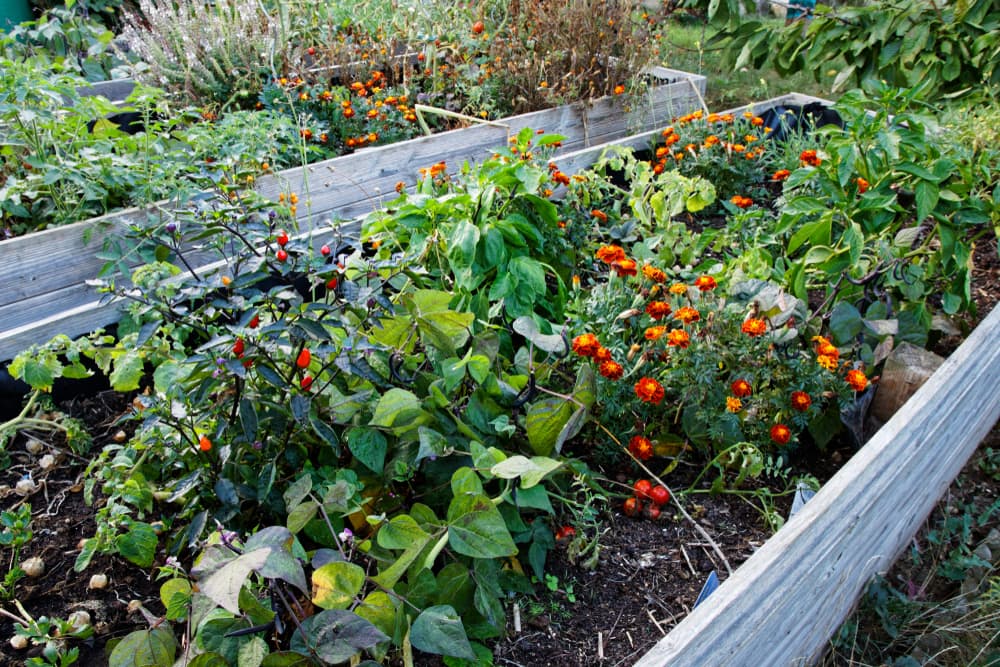
Perennial crops which are well known include plants like strawberries, rhubarb, artichokes and asparagus, but there are far more perennial vegetables to consider.
Perennial brassica (cabbage family crops), perennial alliums, sorrels, marrows, and many other plants can also be used on their own, or in combination with perennial flowers and herbs, to replace an area of lawn with new, productive beds or borders.
7) A Forest Garden

Edible perennials, of course, also include a wide range of fruit trees, cane fruits and fruiting shrubs.
These too can be great options to create diverse planting schemes to replace a grass lawn.
A forest garden, or edible woodland garden, is all about creating a productive, beautiful space that provides food and a range of other resources in carefully considered, layered planting schemes which mimic a natural woodland or forest.
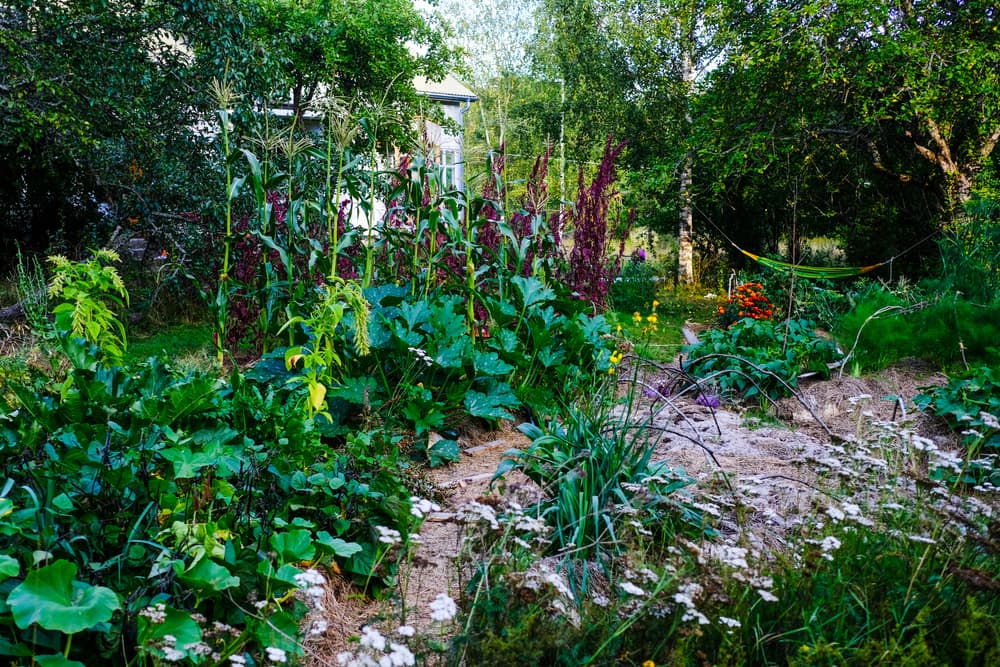
A garden given over to forest garden planting will be a rich space, filled with beneficial wildlife and useful plants.
Once established, this is perhaps the ultimate low-maintenance food-producing system – since all the elements in a forest garden design are carefully chosen to work together, meaning you can largely let nature take the reigns.
8) Natural Play Areas For Kids
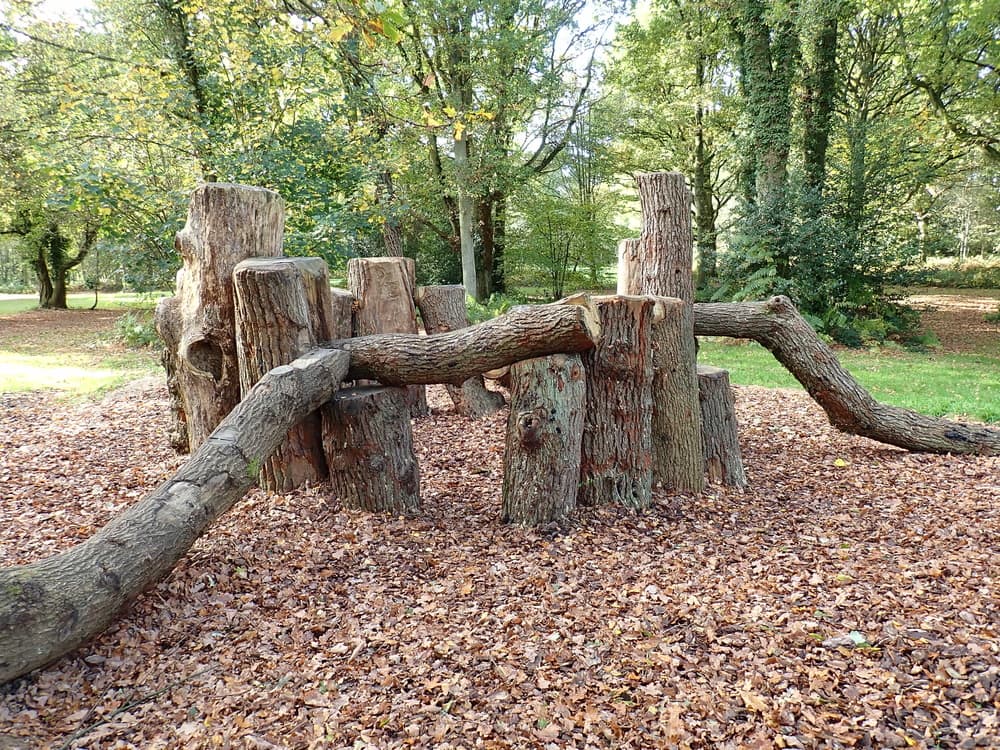
Some people are reluctant to get rid of their lawn because they worry that without a lawn, kids will not have space to play.
While a lawn may be the best place to kick a ball around, the more diverse environments created by establishing the alternatives above can be wonderful environments for children to learn and play.
Mow paths in a wildflower meadow or create paths through other plantings which kids can explore, race around on, or play hide and seek.
Plant trees for kids to climb, make dens using natural materials, or allow kids to make their own.
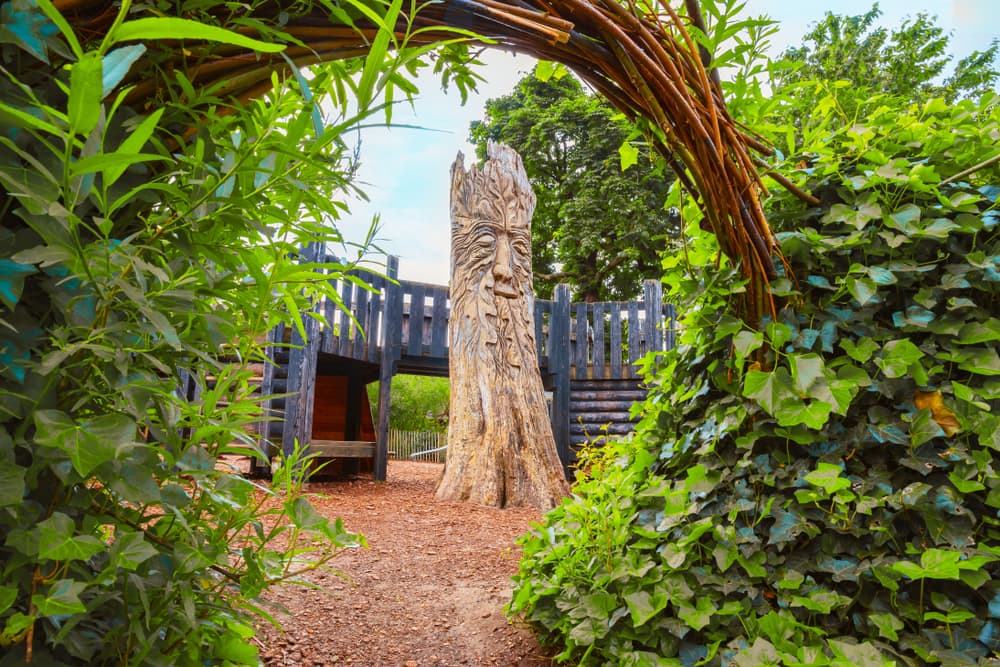
Send kids on a bug hunt to learn more about the creatures with whom they share their space.
Create a safe space for foraging, so kids can graze as they go.
Make each journey into your garden an adventure with lush, dense planting, and kids certainly won’t miss the lawn.
9) Forage For Chickens / Other Garden Livestock
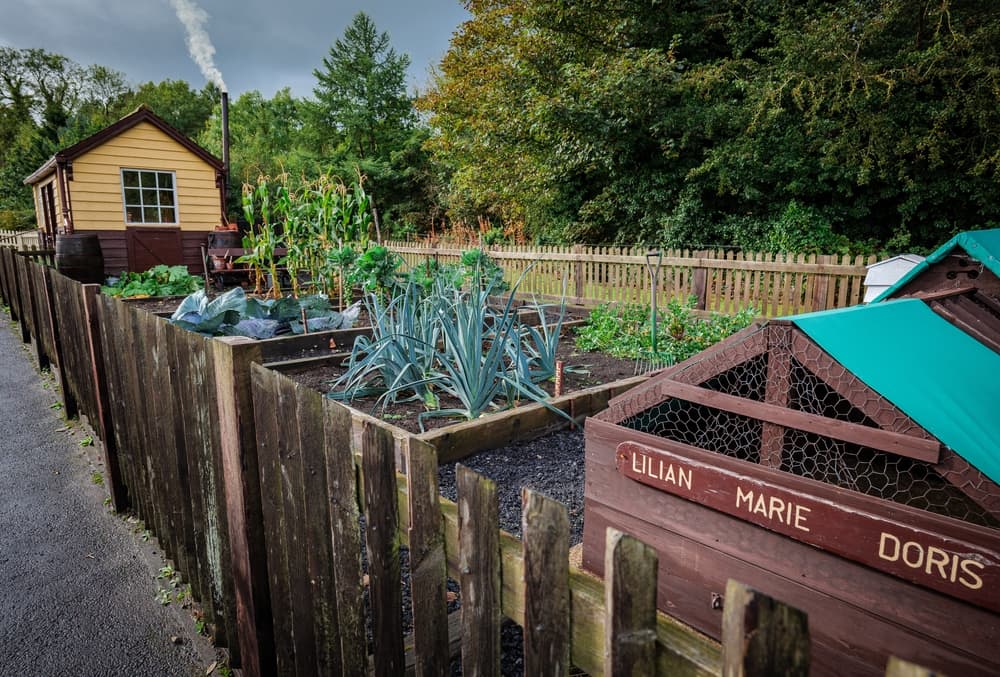
If you like the idea of becoming more self-sufficient and living the ‘good life’ then you might also like to consider adding some livestock to your garden.
As well as giving over some of your lawn to food-producing areas, you might also like to make an area where chickens or other garden wildlife can forage, and sowing a diverse forage mix in place of mono-culture grass.
Whether you fence off growing areas from chickens, or chickens or other livestock from the rest of the garden, in some areas, this could be another interesting option to consider.
Just make sure you know the rules in your area before you introduce any animals to your garden.
10) Eco-Friendly Patio / Decking
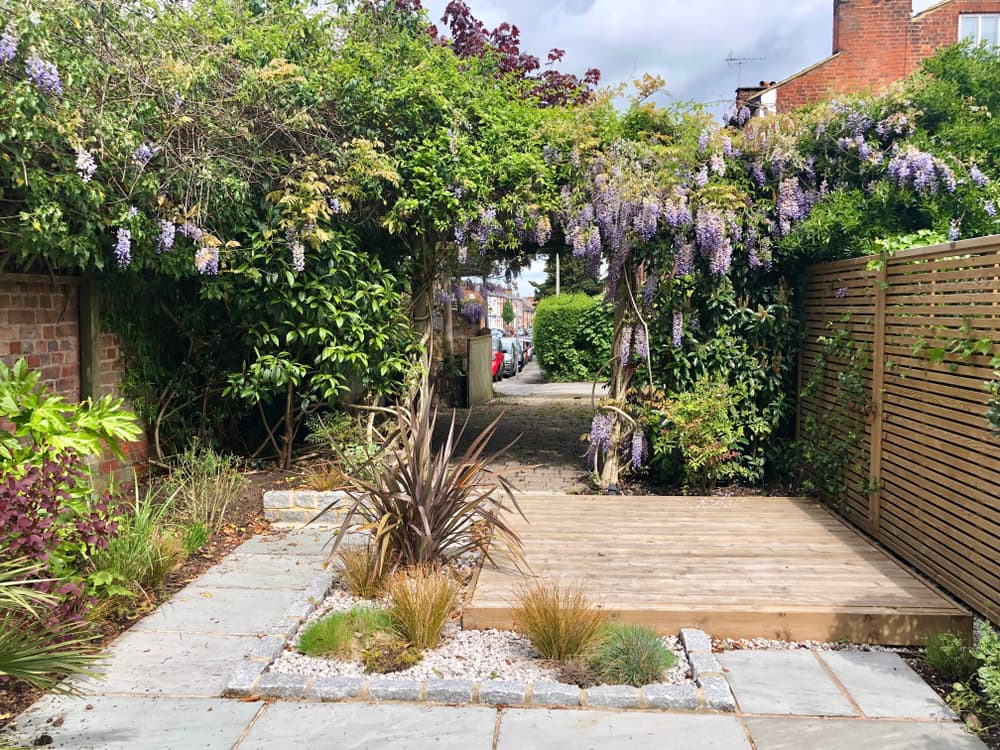
Finally, of course, you might choose to replace an area of lawn with some eco-friendly decking or an eco-friendly patio area.
Just make sure, in a sustainable garden, that you choose materials for any such areas which are natural or reclaimed.
Maximising photosynthesis and adding more plants is always the most eco-friendly choice.
Permeable surfaces, with lush planting all around, are the best choices for a sustainable garden.
References
- 1History of Early American Landscape Design. (n.d.). National Gallery of Art. Retrieved March 20, 2023, from https://heald.nga.gov/mediawiki/index.php/Lawn
- 2Balogh, A. (2021, December 13). The rise and fall of monoculture farming. Horizon Magazine. Retrieved March 20, 2023, from https://ec.europa.eu/research-and-innovation/en/horizon-magazine/rise-and-fall-monoculture-farming
- 3Ways to support us. (n.d.). National Trust. Retrieved March 20, 2023, from https://www.nationaltrust.org.uk/support-us
- 4Wilson, E. (2008). Why do we need to protect biodiversity? Environment: European Commission. Retrieved March 20, 2023, from https://ec.europa.eu/environment/nature/biodiversity/intro/index_en.htm
- 5Kogut, P. (2020, October 20). Monoculture Farming In Agriculture Industry. EOS Data Analytics. Retrieved March 20, 2023, from https://eos.com/blog/monoculture-farming/
- 6Wildflower Meadows. (n.d.). Sustainability Exchange. Retrieved March 20, 2023, from https://www.sustainabilityexchange.ac.uk/wildflower_meadows
- 7Forest Research. (2022a, February 9). Wildflower meadow habitats. Retrieved March 20, 2023, from https://www.forestresearch.gov.uk/tools-and-resources/fthr/urban-regeneration-and-greenspace-partnership/greenspace-in-practice/benefits-of-greenspace/wildflower-meadow-habitats/
- 8Water: Garden for Wildlife. (n.d.). National Wildlife Federation. Retrieved March 20, 2023, from https://www.nwf.org/Garden-for-Wildlife/Water
